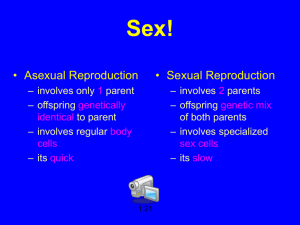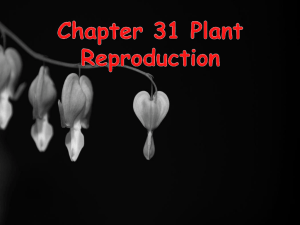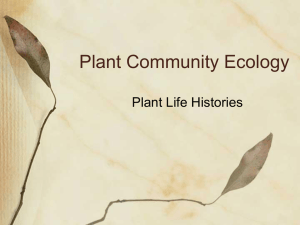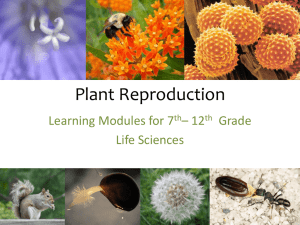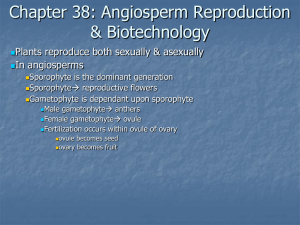Chapter 24
advertisement
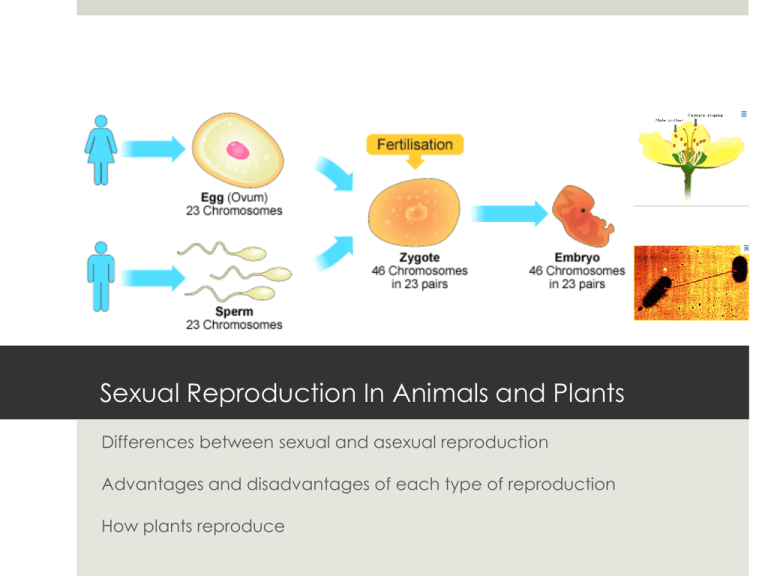
Sexual Reproduction In Animals and Plants Differences between sexual and asexual reproduction Advantages and disadvantages of each type of reproduction How plants reproduce Reproduction can be asexual or sexual Asexual reproduction – single parent passes copies of all its genes to offspring Offspring is a clone of its parent Prokaryotes and some eukaryotes can reproduce asexually Sexual reproduction – two parents form reproductive cells that have half the number of chromosomes of parents Offspring have traits of each parent but is genetically different from each Eukaryotes can reproduce asexually Asexual Reproduction Types Fission Fragmentation Budding Advantages/Disadvan tages Asexual reproduction simplest and most primitive form of reproduction Produce many offspring in short period of time Little genetic variation – problem in changing environment Sexual Reproduction Evolution Advantages/Disadvan tages May have evolved from mechanisms used by early life to repair DNA Organism must use energy to produce gametes and find mate Only diploid cells can do DNA repair Quickly makes different combinations of genes – creates genetic diversity which is the raw material of evolution Many enzymes that are involved in DNA repair are also involved in meiosis Sexual Life Cycles of Eukaryotes Animals have a diploid life cycle – life cycle is dominated by diploid stage – which produces haploid gametes – which fuse to form diploid zygote Plants have a life cycle that alternates between diploid and haploid Diploid phase in plants called sporophytes Sporophytes produce haploid spores by meiosis Spores develop into haploid multicellular individuals called gametophytes without fusing with another cell Gametophyte produces haploid gametes by mitosis. Gametes fuse and give rise to the diploid phase Plant Life Cycle Complex plants have sporophytes and gametophytes that appear very different In mosses, the haploid gametophyte is dominant In flowering plants, the diploid sporophyte generation is dominant Reproduction in Seed Plants Seed plant gametophytes are made up of only a few cells Male gametophytes produce pollen Ovule Female gametophytes develop within an ovule – which is part of the sporophyte. After fertilization by pollen – the ovule and its contents develop into a seed Seed plants can reproduce sexually without water –wind, insects and birds carry pollen to the female parts of the plant pollination Seeds Seeds contain the embryos of plants An embryo is a new sporophyte Outer layers of ovule harden to form protective seed coat Leaf-like structures called cotyledons are part of plant embryo – they provide nutrients to embryo Flowers Gametophytes develop within flowers Outermost whorl = sepals Second whorl = petals (these are brightly colored to attract birds and insects) Stamen – produces pollen; consists of anther and filament Pistil – produces ovules; consists of ovary, style and stigma (sticky part where pollen sticks) Fruit Structure of the plant that contains the seed Develops from one or more of the flower’s ovaries Apples, tomatoes, avocados, cucumbers, pumpkins, okra – anything that contains seed(s) is a fruit Vegetables Other part of plant that we eat – leaf, root, stem… Any part of the plant that we eat that does not contain the seed Celery, carrots, potatoes, spinach, etc…. Parts of plant not directly involved in reproduction



